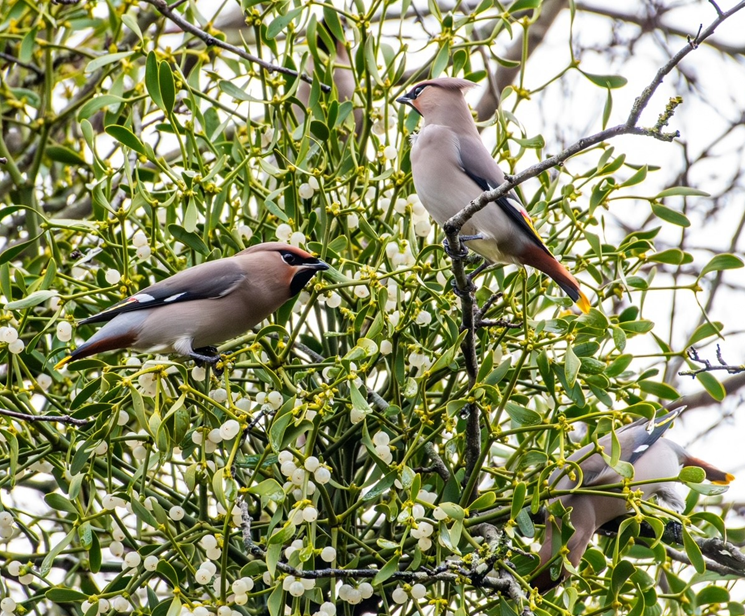Winter thrush ringing in Grampian in autumn/winter
2024
Grampian Ringing Group has never specifically targeted the ringing of
winter thrushes (Redwing and Fieldfare), and numbers ringed have usually been
less than 50 per year. However, some group members put in more effort in 2022
when we ringed 61 Redwing and 36 Fieldfare. These were caught at roost sites,
in gardens during snowy weather or when feeding on rowan or whitebeam berry
crops. In 2023 the berry crop was very poor and there was no influx of thrushes
into gardens, resulting in low numbers ringed (7 Redwing and 9 Fieldfare).
However, following a bumper rowan berry crop in summer 2024 we began looking
for potential catching sites with berries in the autumn. Some Redwings were
ringed at Loch of Leys (26 between 11 and 28 November, including a 1st
year bird controlled after being ringed on Fair Isle on 31 October), Craiglash
(59 Redwing and 7 Fieldfare between 14 November and 8 December) and Pitfichie
Forest (40 in mid-November). We also located two potential ‘new’ sites, at
Stewartfield, near Strachan and at Auchorrie, near Torphins. Both sites had an
abundance of rowan berries when checked in October, but were not checked again
until 2nd December, by which time there were several hundred
thrushes at both and most of the berries had been stripped from the trees.
Ringing site at Stewartfield:
No catches were attempted at Auchcorrie, but at
Stewartfield net rides were made through dead bracken below 6 -10 m high rowan
trees and we targeted those trees that still retained some berries. However,
many birds were feeding on fallen berries on the ground which probably helped
increase catches. We began catching on 3 December when we set 2 x 18 m ‘thrush
mesh’ nets and played ‘Latvian Redwing’ song lures at both nets in an attempt
to increase catches. This was pretty successful and we ringed 32 Redwing and 2
Fieldfare. We returned the following day, set 2 x 18 m thrush mesh nets again,
and ringed a further 47 Redwing and 15 Fieldfare. We played the Latvian Redwing
lure at one net (where all the Redwing and 2 Fieldfare were caught) and
Fieldfare song at the other net (where 13 Fieldfare and no Redwing were
caught). We gave the site a break on the 5th but returned on 6 December, set 3
x 18 m thrush mesh nets, played Redwing song at all 3 nets and ringed 62
Redwing. Poor weather on 7 and 8 December prevented further catches but a
further 9 redwing were ringed on the 9th in 2 x 18 m thrush mesh
nets with Latvian Redwing lures, by which date there were virtually no berries
left! Thus, during 4 catching days over a week we ringed 150 Redwing and 17
Fieldfare, as well as 27 Blackbird and a single Mistle Thrush.
Net ride at Stewartfield:
Two races of Redwing are recognised; the nominate Turdus
iliacus iliacus breeds in northern Europe whereas T. i. coburni
breeds in Iceland. The nominate race is generally lighter brown on the upper
chest, nape and head and has pinkish legs, whereas the Icelandic race is darker
brown on the upper chest, nape and head and has brownish legs. However, it is
not considered possible to identify the race of every bird as there is overlap
in feather and leg colour, and biometrics. It is currently unclear as to the breeding-season
origins of birds wintering in Scotland, but it is thought that most Icelandic
birds winter in the north-west of the UK whereas many birds from northern
Europe winter in the south and east of the UK. We did record a few clear
examples of Icelandic birds in our catches, but the difficulty in assigning
birds to a specific race means that we still have much to learn about Redwing
movements of both races.
Northern European Redwing race:
Icelandic Redwing race:
Fieldfare:









































